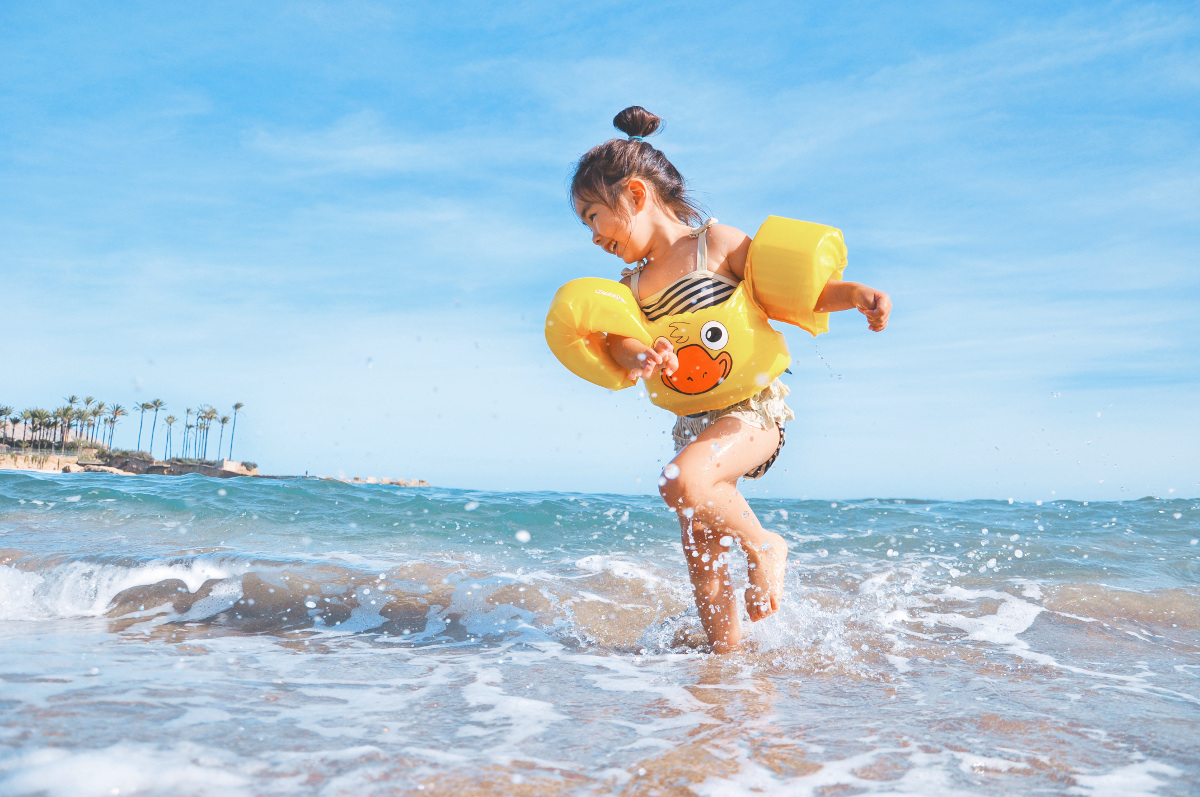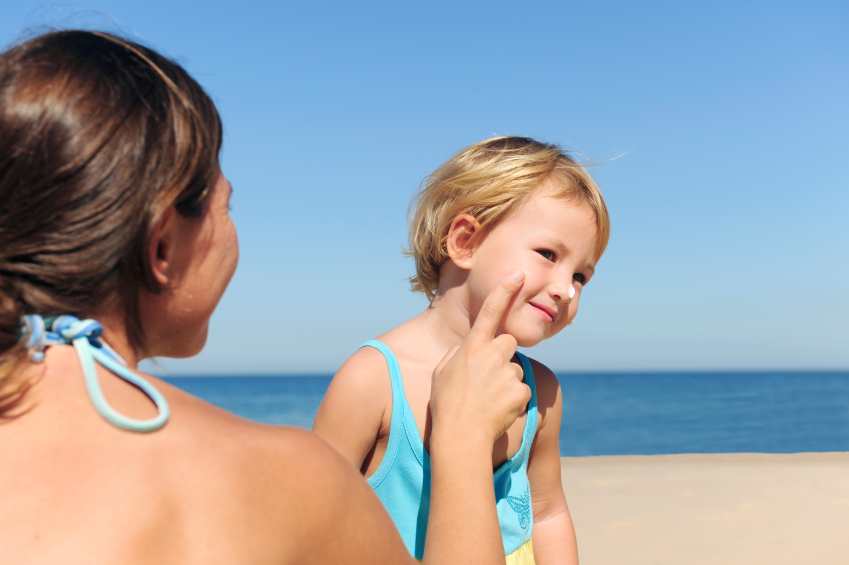
We all enjoy spending as much time as possible outdoors once the weather warms up. Soaking up the sun, sans burn, is healthy and rejuvenating. Before you head outside this summer, take the necessary steps to protect yourself, your babies and toddlers from unnecessary sunburn or sun exhaustion.
Keeping your kids sun safe can be quick and easy. Once they’re in the habit, the following recommendations from the Sun Smart organization will become part of your family’s daily routine and will spare everyone from short and long-term skin damage:
Medical research from all over the world recommends that babies under 12 months should not be exposed to direct sunlight during the daily sun protection times (when the UV Index is 3 or above). A baby’s skin is thin, extremely sensitive and can burn easily. The more sun exposure during childhood, the greater the risk of skin cancer in later life.
When UV levels are low, sun protection is generally not required and a small amount of direct UV exposure is considered safe and healthy for infants. However, if spending longer periods of
time outdoors during low UV periods, it is recommended that your baby’s skin be protected from UV exposure with clothing and shade when available.
Parents and care providers are encouraged to access the daily sun protection times. Sun protection times can also be found on your local meteorology websites or phone applications.

Five steps to protect against sun damage during the daily sun protection times.
1. Slip on Sun-Protective Clothing. Cover as much of the baby’s skin as possible with cool, loose-fitting clothes and wraps. The higher the UV protection factor (UPF), the greater the protection the fabric will provide. If possible, choose fabrics that are at least UPF15 (good protection), but preferably UPF50 (excellent protection).
If you choose clothing that doesn’t have a UPF label, look for fabrics that contain full percentages and/or blends of heavyweight natural fibers like cotton, linen and hemp, or lightweight synthetics such as polyester, nylon, lycra and polypropylene. The tighter the fabric structure, whether knitted or woven, the better the sun protection.
2. Slop on SPF30 (or higher) broad-spectrum, water-resistant sunscreen. Sunscreen filters UV radiation, but does not completely block it out. If you can’t avoid being in the sun, apply sunscreen to those small areas of the body that are not covered by a hat and clothing.
The Australasian College of Dermatologists states that because very young babies (less than six months of age) absorb more of any chemical applied to the skin than adults, the widespread regular use of chemical sunscreens is not recommended. The American Academy of Pediatrics has stated that sunscreens may be used on infants younger than six months on small areas of skin if adequate clothing and shade are not available.
Many brands of sunscreen have a baby or toddler formula. These are just as protective, but much gentler on their skin. Look for sunscreens that have been dermatologically tested for sensitive skin.
Sunscreen Tips

3. Slap on a hat. Hats should provide good shade to the face, back of the neck, eyes and ears. Wearing a hat with a broad-brim that shades the eyes can reduce UV radiation to the eyes by 50%. Suitable sun protection hats include: Soft legionnaire hats, with a flap at the back to protect the neck – the flap and front peak should overlap. Bucket hats with a deep crown and angled brim that sit easily on the child’s head. Broad-brim hats.
Baseball caps do not offer enough protection for the cheeks, ears and neck and are not recommended.
For young babies, choose a fabric that will crumple easily when they put their head down. When choosing a hat, consider its size and comfort, the amount of shade it provides to the face, if it will obstruct vision or hearing, and safety. Hats that can be adjusted at the crown are best. If the hat is secured with a long strap and toggle, ensure it has a safety snap, place the strap at the back of the head or trim the length so it doesn’t become a choking hazard. Many children do not like to wear hats. Persistence is needed to teach them that a hat is part of their outside routine.
4. Seek shade. If outdoors, babies need to be kept in the shade. Even in the shade, UV radiation can reflect from surfaces such as sand and concrete, so use a hat, clothing, sunscreen and sunglasses. The shade moves with the sun, so follow the shade. When travelling, use a shade visor or hang a blanket over the side windows in the car. Side and back windows don’t offer as much protection as the front windscreen.
When buying a pram, check that the hood can be adjusted, so that it can be moved to block out the direct sun. For the best protection, pram shade covers should completely cover the pram and be made of densely woven fabric that combines a mesh section – so the baby can see and air can circulate – and a shade fabric section. The fabric section should block close to 100% of UV radiation (UPF50+) and the mesh section should block at least 70% of UV radiation (UPF3).
5. Slide on sunglasses. To protect the eyes, look for sunglasses that are a close fitting, wrap-around style that cover as much of the eye area as possible. Toy or fashion-labelled sunglasses do not meet the requirements for sunglasses under many domestic and international standards and should not be used for sun protection.
Remember that even without wearing sunglasses, wearing a hat with a brim that shades the eyes can reduce UV radiation to the eyes by 50%.3
Role Modeling
Children often copy those around them and learn by imitation. If adults adopt sun protection behaviors, the children in their care are more likely to do the same.
Vitamin D
Vitamin D is a hormone that controls calcium levels in the blood. It is needed for the development and maintenance of healthy bones, muscles and teeth and is important for general health.8,9 Most vitamin D is made in the skin from exposure to the sun’s UV. Babies get their initial store of vitamin D from their mothers, so they are at risk of low vitamin D if their mother has low levels.10 If concerned about a baby’s vitamin D levels, speak with a doctor.
Read more about being safe while having fun in the sun here.
